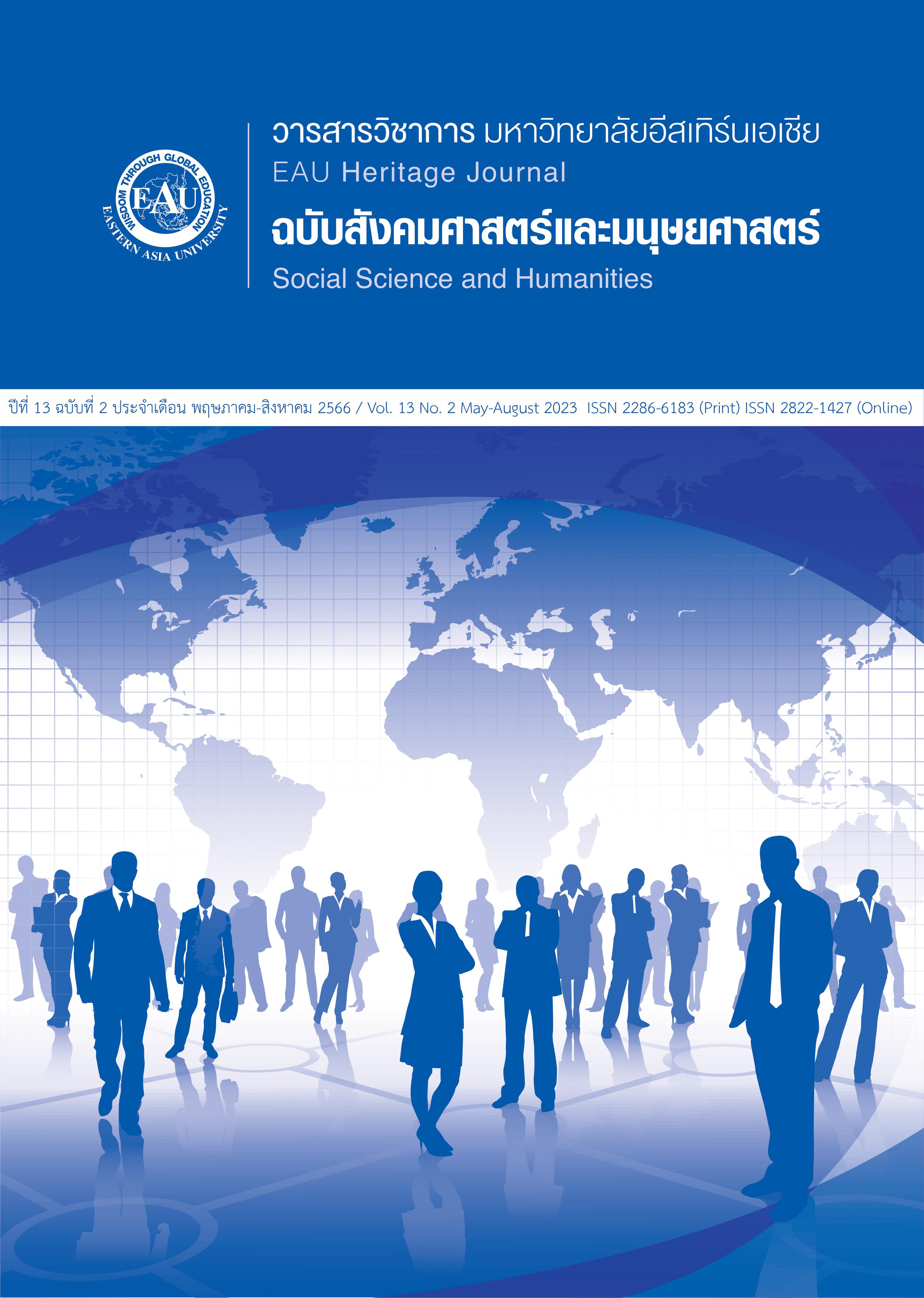อุบัติเหตุของอากาศยานในการบินพาณิชย์ ตอนที่ 2 สาเหตุและรากเหง้าของปัญหา
คำสำคัญ:
อุบัติเหตุของอากาศยาน, มนุษย์ปัจจัย, ความผิดพลาดของมนุษย์, การป้องกันอุบัติเหตุบทคัดย่อ
รายงานอุบัติเหตุในการบินพาณิชย์ส่วนใหญ่ มีข้อสรุปว่า สาเหตุมาจากความผิดพลาดของมนุษย์ อย่างไรก็ตาม เมื่อมีการวิเคราะห์รากเหง้าของปัญหาแล้ว พบว่า ความผิดพลาดของมนุษย์เปรียบเสมือนยอดของภูเขาน้ำแข็ง ซึ่งเป็นส่วนที่สังเกตได้ง่าย ขณะที่มีสาเหตุอื่นอีกจำนวนมากที่สังเกตได้ยากกว่า บทความนี้นำเสนอ สาเหตุของอุบัติเหตุและรากเหง้าของปัญหา ตัวแบบสาเหตุของอุบัติเหตุประกอบด้วย ตัวแบบโดมิโน, ตัวแบบสาเหตุการสูญเสีย, ตัวแบบเนยสวิส, ตัวแบบการแพร่ระบาด, ตัวแบบสแตมป์, ตัวแบบแฟรม และตัวแบบเชลล์ ผลจากการวิเคราะห์ พบว่า รากเหง้าของปัญหาเกิดจาก ความสัมพันธ์เชิงพลวัตของปัจจัยด้านความเปลี่ยนแปลง มนุษย์ และระบบ
References
Airbus. (2021). Distribution of accidents by accident categories. Retrieved from https://accidentstats.airbus.com/statistics/accident-categories
Aliandrina, D. (2012). Organizational factors in aviation safety management failures: The case of Indonesia. Retrieved from https://core.ac.uk/download/pdf/35467161.pdf
Alkov, D. (1972). The life change unit and accident behavior. Lifeline.
Allianz. (2021). Six aviation loss trends on the radar. Retrieved from https://www.agcs.allianz.com/
news-and-insights/expert-risk-articles/six-aviation-loss-trends-on-the-radar.html
Bills, K. (2008). Learning from poor safety management systems. In The Safety Conference 2008: OHS for The New Era. Retrieved from https://www.atsb.gov.au/media/24563/sia281008.pdf
Bird, F. E., Germain, G. L., & Bird, F. Jr. E. (1985). Practical loss control leadership. Loganville, Ga.: International Loss Control Institute.
Committee on Aircraft Certification Safety Management. (1998). Improving the continued airworthiness of civil aircraft: A strategy for the FAA’s aircraft certification service. Washington, DC: The National Academies.
DeBlois, L. A. (1915). The application of safety devices. Hagley Museum and Library, Wilmington, DE.
Gordon, J. E. (1949). The epidemiology of accidents. American journal of public health, 39(4),
–515.
Graeber, C. (2015). Human factor. Retrieved from https://www.boeing.com/commercial/
aeromagazine/aero_08/human_textonly.html
Grandjean, E. (1979). Fatigue in industry. Occupational and Environmental Medicine, 36(3), 175–186.
Greenwood, M., & Woods, H. M. (1919). The incidence of industrial accidents upon individualsy with special reference to multiple accidents. London: H. M. Stationery off. Retrieved from http://www2.stat-athens.aueb.gr/~exek/Erasmus-course-papers/Greenwood-IndFatResBoard
-1919.pdf
Griffin, G. (2010). Human error is biggest obstacle to 100 percent flight safety.
The Denver Post. Retrieved from https://www.denverpost.com/2010/02/13/human-error-is-biggest-obstacle-to-100-percent-flight-safety/
Hegin, M. S. (1927). Intelligence and safety. Journal of educational research, 16(2), 81–87. https://doi.org/10.1080/00220671.1927.10879768
Heinrich, H. W. (1931). Industrial accident prevention: A scientific approach. New York: McGraw-Hill.
Hollnagel, E. (2004). Barriers and accident prevention. Ashgate: Aldershot.
Hollnagel, E. (2012). FRAM: The functional resonance analysis method: Modelling complex socio-technical systems. London: CRC Press. https://doi.org/10.1201/9781315255071
Hollnagel, E. (2016). The meaning of FRAM. Retrieved from https://functionalresonance.com/brief-introduction-to-fram/the-meaning-of-fram.html
Horton, B. (2021). 5 reasons why safety management systems fail to deliver. Vistair. Retrieved from https://resources.vistair.com/articles/5-reasons-why-safety-management-systems-fail-to-deliver-what-you-expect
Hosseinian, S. S., & Torghabeh, Z. J. (2012). Major theories of construction accident causation models: A literature review. International journal of advances in Engineering & Technology, 4(2), 53-66.
International Civil Aviation Organization--ICAO. (2018). Doc 9859 safety management manual
(4th Ed.). ICAO. Retrieved from
https://caainternational.com/wp-content/uploads/2018/05/9859_unedited_en.pdf
ICAO. (2020). GASP: Global aviation safety plan 2020-2022. Retrieved from https://www.icao.int
/SAM/Documents/2019-RASGPA10/2.2%20Global%20Aviation%20Safety%20Plan.pdf
Kang, Y., Hahm, H., Yang, S., & Kim, T. (2008). Application of the life change unit model for the prevention of accident proneness among small to medium sized industries in Korea. Industrial health, 46(5), 470–476. https://doi.org/10.2486/indhealth.46.470
Klein, J. A. (2009). Two centuries of safety history at dupont, Process Safety Progress. Wiley Interscience, 28(2), 114–122.
Lappalainen, J. (2017). Overcoming obstacles to implementing SMS. The International Transport Forum, OECD. Retrieved from https://www.econstor.eu/bitstream/10419/194053/1/itf-dp-2017-18.pdf
Leveson, N. (2004). A new accident model for engineering safer systems. Safety science, 42(4), 237–270. https://doi.org/10.1016/S0925-7535(03)00047-X
Marbe, K. (1935). The psychology of accidents. The Human Factor, 9, 102–103.
Peterson, D. (1978). Techniques of safety management (2nd Ed.). New York: McGraw-Hill.
Rankin, W. (2008). MEDA investigation process. Retrieved from https://www.boeing.com/commercial/
aeromagazine/articles/qtr_2_07/AERO_Q207_article3.pdf
Rasmussen, J. (1982). Human errors - A taxonomy for describing human malfunction in industrial installations. Journal of Occupational Accidents, 4(2-4), 311-333. https://doi.org/10.1016/0376-6349(82)90041-4
Reason, J. (1997). Managing the risks of organizational accidents. London: Routledge https://doi.org/10.4324/9781315543543
Reason, J. (2000). Human error: Models and management. BMJ: British Medical Journal, 320(7237), 768–770.
Reason, J., & Maddox, M. (2005). Human factors guide for aaviation maintenance chapter 14 human error. Retrieved from https://www.faa.gov/about/initiatives/maintenance_hf
/library/documents/media/human_factors_maintenance/human_factors_guide_for_aviation_maintenance_-_chapter_14.human_error.pdf
Schaper, D. (2021). Boeing to pay $2.5 billion settlement over deadly 737 max crashes. Retrieved from https://www.npr.org/2021/01/08/954782512/boeing-to-pay-2-5-billion-settlement-over-deadly-737-max-crashes
Schulzinger, M. S. (1956). The pre-accident patients. Industrial Medicine and Surgery, 25(453).
Shappell, S. A., & Wiegmann, D. A. (2000). The human factors analysis and classification system—HFACS. Retrieved from https://www.researchgate.net/publication/247897525_
The_Human_Factors_Analysis_and_Classification_System-HFACS
Shaw, L., & Sichel, H. S. (1971). Accident proneness research in the occurrence, causation, and prevention of road accidents. Oxford: Pergamon. Retrieved from https://books.google.co.th/books?id=HX1GBQAAQBAJ&printsec=frontcover&source=gbs_ge_summary_r&cad=0#v=onepage&q&f=true
Singh, A. (2010). Pilots play with lives by flying manually for “ultimate kick.” India Today. Retrieved from https://www.indiatoday.in/india/story/pilots-play-with-lives-by-flying-
manually-for-ultimate-kick-70895-2010-04-04
SKYbrary. (2018). Error management (OGHFA BN). Retrieved from https://www.skybrary.aero/
index.php/Error_Management_(OGHFA_BN)
SKYbrary. (2020). Just culture. Retrieved from https://www.skybrary.aero/index.php/Just_Culture
Spence, R. (2010). Safety Management Systems—What is the Problem?. Retrieved from https://www.bainessimmons.com/wp-content/uploads/SMS-whatistheproblem.pdf
Surry, J. (1969). Industrial accident research: A human engineering appraisal. Canada: Labour Safety Council, Ontario Department of Labour.
Szeles, E. (2015). Lauda air crash 1991: Still too many open questions. Retrieved from
https://www.austrianwings.info/2015/01/lauda-air-crash-1991-still-too-many-open-questions/
Tiffin, J. (1949). Visual performance and accident frequency. Journal of applied psychology, 33(5), 499–502.
Toft, Y., Dell, G., Klockner, K. K., & Hutton, A. (2012). The core body of knowledge for generalist OHS professionals. VIC: Safety Institute of Australia.
Tsujimoto, J. (2014). Challenges of large airline aviation safety investigation organizations and their Safety Management System. In paper presented at ISASI 2014 seminar, 1-14 (n.p.) Retrieved from https://www.isasi.org/Documents/library/
technical-papers/2014/ISASI%202014%20-%20Tsujimoto%20-%20United%20Airlines%20-%20Airline%20safety%20investigation%20and%20SMS.pdf
Welchsler, D. (1926). Tests for taxicab drivers. Journal of personnel, 5, 24–30.
Wiegmann, D., Faaborg, T., Boquet, A., Detwiler, C., Holcomb, K., & Shappell, S. (2005). Human error and general aviation accidents: A comprehensive, fine-grained analysis using HFACS. Retrieved from https://www.faa.gov/data_research/research/med_humanfacs/
oamtechreports/2000s/media/0524.pdf
Wiegmann, D. A., Rich, A. M., & Shappell, S. A. (2000). Human error and accident causation theories, frameworks and analytical techniques: An annotated bibliography. Retrieved from https://commons.erau.edu/publication/736/
Wiegmann, D. A., & Shappell, S. (2001). Applying the human factors analysis and classification system (HFACS) to the analysis of commercial aviation accident data. Retrieved from https://www.researchgate.net/publication/252793626_APPLYING_THE_HUMAN_FACTORS_ANALYSIS_AND_CLASSIFICATION_SYSTEM_HFACS_TO_THE_ANALYSIS_OF_COMMERCIAL_AVIATION_ACCIDENT_DATA
Woods, D., Dekker, S., Cook, R., Johannesen, L., & Sarter, N. (2010). Behind human error (2nd Ed.). London: CRC Press. https://doi.org/10.1201/9781315568935




